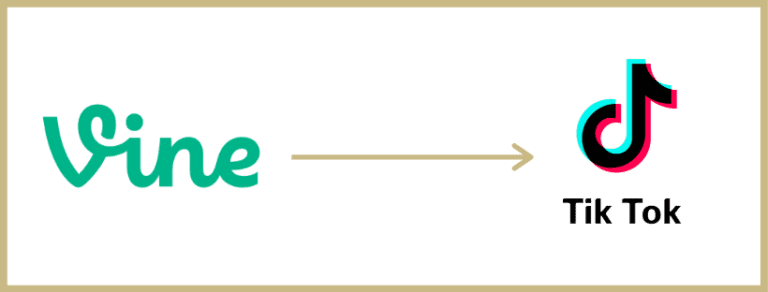
Moving Forward With Marketing in 2020
What new techniques and advancements will this new decade bring for the marketing world? As new technologies develop at a rapid pace, marketers need to be quick, careful, creative, and dedicated to researching trends in 2020. Video marketing on social apps will continue to grow and be profitable, and new apps will pop up and offer untapped advertising space. However, understanding the flippant nature of social platforms is crucial to taking the appropriate risks and making the correct decisions for your campaigns. Voice activated devices and online influencers will also offer a constantly expanding marketing space and should encourage us to push the envelope and take weighted risks in 2020.
Analysts predict that video marketing will dominate in the coming years. People are reading less, and that doesn’t just apply to books. Consumers are not as likely to engage with advertisements that contain excess written information. What they want are video ads; short and sweet with moving graphics and minimal text to hold engagement while getting the message across quickly. Some may interpret the rise in this style of flashy ad as pandering to laziness, caused by the constant barrage of media day in and day out. Whether or not you view these changes negatively, it is true that people are becoming desensitized to classic forms of media and are more actively engaging with whatever is “new” to their eyes. Younger audiences especially have a voracious appetite for moving, flashing media.

Looking at app trends from the past decade can tell us more about the nature of social media development and audience interests. Apps such as the (now defunct) Vine, which featured user-created videos of seven seconds or less, took social media by storm in 2012. By 2015, there were 200 million active creators and consumers visiting the app daily. Teenagers and young adults dominated the demographic and an impressive number rose to fame through their content. Many tech savvy marketers swooped in and formed partnerships with these “influencers,” effectively putting their brand’s hooks into the everyday lives of teenagers. However, Vine’s acquisition by social media bigwig Twitter and its swift demise that followed highlights the unpredictable and often short lifespan of social influence. Vine left a gaping hole in its wake which TikTok filled in 2017, reaching peak popularity in 2019. There is certainly brand presence on TikTok, but not to the extent of apps like Facebook and Instagram. However, moving ads and brand content that integrates into TikTok’s model (endless streams of looping videos, like Vine) can easily reach a large audience. Getting in (and possibly getting out) fast is the key to advertising on social media in 2020 and beyond – keep track of which apps are trending and which are on their way out. Apps like Vine and older social media outlets such as Myspace, which was the most visited social site from 2005 to 2008 before tanking in 2010 after the rise of Facebook, serve as a testament to how quickly the tides can turn in the fast paced world of app development and tech.
What about untapped areas of social influence? Can voice activated devices shape the future of marketing? A 2017 study showed that 62% of consumers with voice activated devices (Amazon Echo Dot/Alexa, Cortana, etc.) use them to make purchases. What can make voice advertising stand out is its contextual nature. They have the potential to offer a more catered ad that plays off what the consumer is actively asking about or doing with the assistance of their device. Voice ads are currently uncharted territory, but experts predict that they could be incredibly lucrative, so brands should make the leap as soon as possible!
Forming partnerships with companies that make voice control devices would be a good way to start, and analyzing data about device users can help you decide what clients are the right fit for this type of ad. Voice controlled tech is still new to the scene and a road of trial and error lies ahead, but it could be the next big break in advertising. If you are unsure of whether or not you are ready for this kind of risk, remember that taking a chance has the potential to catapult your campaign into success. For example, in early 2014, brands like Target and Nike took a risk by creating their own unique content on Vine, utilizing the prowess of internet-famous influencers, athletes, and hashtags to attract an audience. At this point, brand advertising was minimal on the app, but their efforts paid off – the ads in question gained multiple million views in total. Case in point, figuring out an effective way to advertise on a new platform or device can really pay off.

It can be difficult to gauge which popular social media outlets will thrive and which ones will have a short life. However, taking a look at general societal trends can give us some possible insight. For example, consumers are looking for more “control” over their media consumption, especially when it comes to auditory media. Users are turning to programs such as Spotify where they can create their own music playlists instead of relying on the radio. Similarly, people are increasingly turning to podcasts of their choice rather than talk radio. Most podcasts are independently run, and require paid sponsorships to stay afloat. There are podcasts about almost every subject these days, which makes narrowing in on a target audience easy. It’s like putting an ad out on the radio but hitting a niche demographic based on interests instead of region. Spotify and other music apps also utilize ads. Going forward, streaming based platforms will probably continue to grow due to their ease of use and wide appeal. Speaking of streaming, apps such as Snapchat, Instagram, and Facebook use similar “stories” functions wherein users can post both live and pre-recorded videos and photos that stay highlighted on feeds and the user profile for 24 hours. When a user clicks through stories, ads are interspersed throughout the content feed and appear just like any other post. Therefore, if a user watches “stories” of anyone they follow on their social media, they are inevitably going to be seeing multiple ads each time. So, it should come as no surprise that advertising on stories is exploding.
What are the biggest social marketing trends currently? Social media influencers! These internet celebrities, whether they have thousands or millions of followers, have been popping up left and right on apps like Instagram and Twitter and use their internet fame to promote an endless array of products and services (for a cost, of course). Influencers build their empires through social media and could not exist without it, especially Instagram, which is the #1 used platform for influencer marketing. As new platforms continue to emerge, influencers are constantly spreading their presence across the internet and increasing ad exposure. This “influencer culture” phenomenon is only growing and marketers are catching on – in one survey, 63% of marketers confirmed that they will increase their influencer marketing budget in 2020. At the same time, continuous trend research is a must when investing in influencer marketing. A person’s sphere of influence is constantly shifting and changing and someone’s popularity can tank just as quickly as it rises.
What can we learn from social media changes in the past few years? For one, investing in new and emerging forms of social media marketing will be important going forward in 2020. Let’s ring in an era of critical analysis and trend research to help balance necessary risks that can lead to unimaginably lucrative outcomes. So much has happened in the past decade, the emergence of mobile social media and thousands of unique apps has changed marketing in vast and incredible ways. With dedication and focus, the next decade can bring even more profitable change to the marketing sphere!
